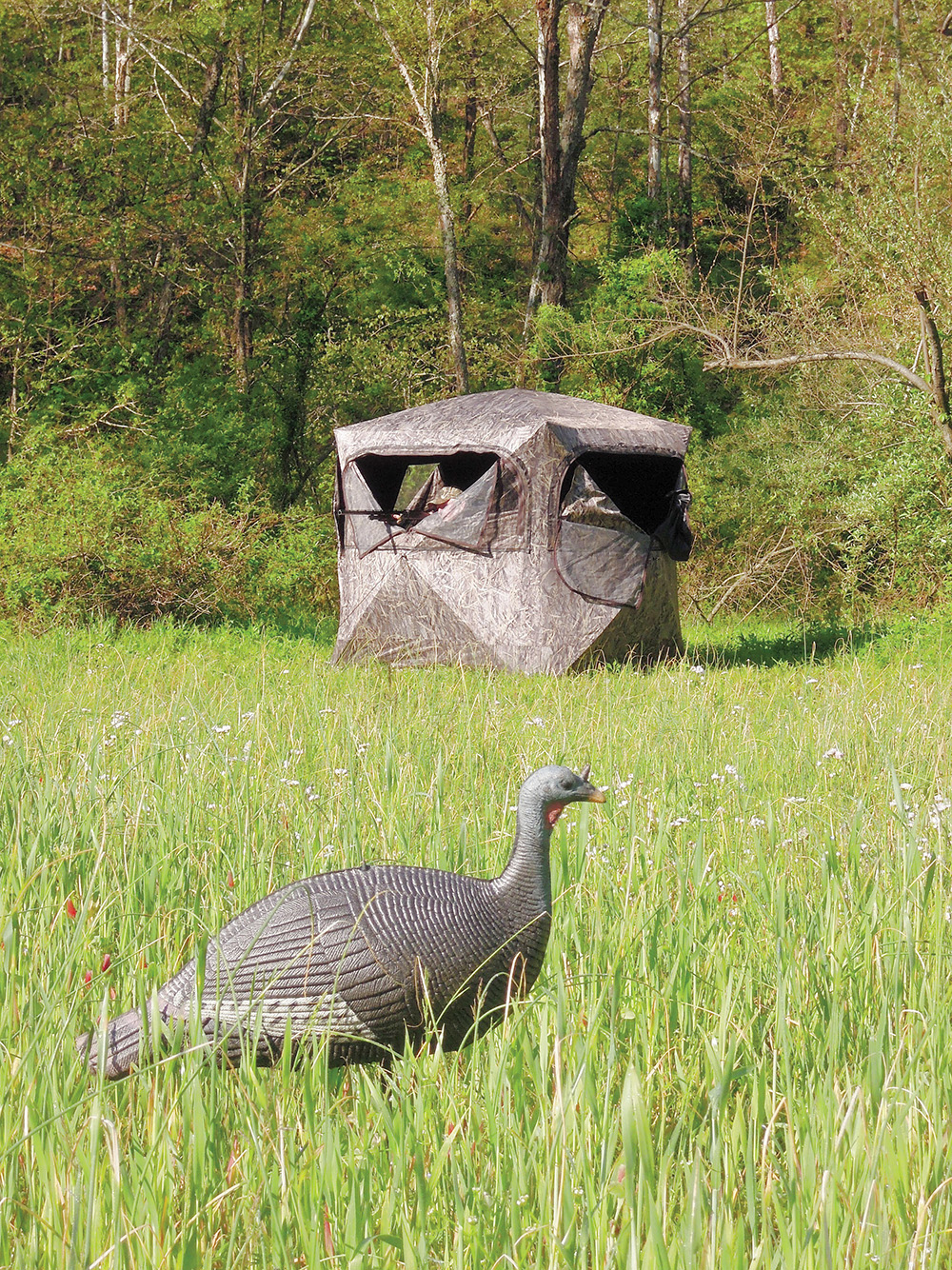Strong year-class could make for a better turkey season
Despite severe cold this past winter, Alabama sportsmen should enjoy a good turkey season this spring, especially in the central and northeastern part of the state.
“The cold shouldn’t have much of an impact on the turkey population,” says Brandon Bobo, a National Wild Turkey Federation biologist in Oxford, Ala. “Gobbling is mostly based upon photoperiod, or the amount of daylight. In Alabama, gobbling typically peaks in the last week of March and first week of April. Then, gobbling might trail off in mid-April, but pick up a bit in late April.”
Since 2014, state biologists have asked Alabama turkey hunters to participate in the Avid Turkey Hunter Survey. While hunting, participants keep track of turkey sightings, gobbling and other data and report their observations to wildlife managers. At the end of the season, the Alabama NWTF will draw a name from all the program participants and reward that person with a new shotgun.
Program participants will also receive the annual turkey report published by the state. Anyone can view the report at www.outdooralabama.com/wild-turkey. During the 2017 spring season, hunters across much of Alabama reported seeing many “jakes,” or young gobblers, a good sign for this upcoming season.
“From the results of our Avid Turkey Hunter Survey, we had an increase in the number of jakes observed in 2017,” says Steve Barnett, the Alabama Division of Wildlife and Freshwater Fisheries top wild turkey biologist. “It was the highest since we began the survey in 2014. Those jakes spotted in the spring of 2017 will be the two-year-old gobblers people will be hunting this year.”
For most of Alabama, turkey season runs from March 15 through April 30. In Zone 2, the season begins on March 31 and concludes on April 30. In Zone 3, sportsmen can only hunt from April 21 to April 25. The state also offers special youth and disabled sportsmen hunts before the regular seasons begin. For specific hunting zone boundaries and additional information, see www.outdooralabama.com/season-and-bag-limits.
“Overall, the forecast looks pretty good throughout the state,” Barnett says. “Northeastern Alabama is probably the best place in the state to hunt turkeys, followed by the west-central part. Northwest Alabama probably has the fewest turkeys compared to the rest of the state. The entire Southeastern United States is experiencing a decline in turkey recruitment. That’s probably most prevalent in northern Alabama.”
Season dates and other regulations may differ on some public properties, so always check the laws before hunting. In particular, six of the best wildlife management areas will open later than most of the state. These include Barbour, Choccolocco, Oakmulgee, Lowndes, Perdido River and Skyline.
“Choccolocco is always a good area,” Bobo says. “I hunt there frequently and have heard hundreds of gobbles on some mornings, but it’s a hard place to hunt. Barbour has a lot of turkeys and intensive management. The NWTF has done a lot of habitat work in Oakmulgee and the Talladega National Forest. Skyline is also pretty good.”
Working with the NWTF and Auburn University, the state captured and released more than 200 wild turkeys during the past four years. Researchers fitted them with tracking devices and released the birds on Barbour, Oakmulgee and Skyline WMAs. The devices give biologists information on gobbling activity, nesting, survival rates, reproduction and other factors, which could help determine future season dates and bag limits.
“We are following a structured decision-making process to guide turkey management in Alabama,” Barnett says. “In that process, we have developed a prediction model to look at survival, reproduction and harvest rates. We needed updated research in Alabama to get us better numbers on these elements. This experiment will test our prediction model to demonstrate if a delayed opening date will help improve turkey reproduction and total turkey numbers over time.”
Sportsmen hunting these areas might spot turkeys wearing leg bands or something resembling miniature backpacks. Hunters can legally shoot these gobblers during the season if they choose.
“We don’t want hunters to be biased toward not killing gobblers with tracking devices,” Barnett says. “Part of the information we need is harvest rates. If hunters shoot a turkey with a device or leg band, we request that they report those harvests to us as soon as possible.”
Although numbers may have dipped a little in recent years, Alabama still holds more wild turkeys than any other Southeastern state and thousands more than the 10,000 birds estimated to live in Alabama about a century ago. These magnificent birds now gobble in all counties across the Cotton State, even where no turkeys lived just a few decades ago. Now, Alabama sportsmen enjoy long seasons and very liberal bag limits of one gobbler per day and five per season.
For more information on the National Wild Turkey Federation, see nwtf.org/about/state/alabama. For more information on how to participate the Avid Turkey Hunter Survey, contact Barnett at his office in Spanish Fort by calling 251-625-5474 or email [email protected].
John N. Felsher lives in Semmes, Ala. Contact him through Facebook.






